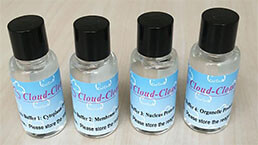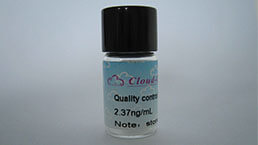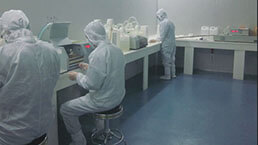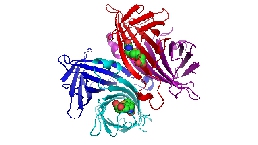Packages (Simulation)

Reagent Preparation

Image (I)
Image (II)
Certificate


CLIA Kit for Epiregulin (EREG)
EPR; ER; Proepiregulin
- Product No.SCB945Hu
- Organism SpeciesHomo sapiens (Human) Same name, Different species.
- Sample Typeserum, plasma, tissue homogenates, cell lysates, cell culture supernates and other biological fluids
- Test MethodDouble-antibody Sandwich
- Assay Length2h, 40min
- Detection Range1.37-1,000pg/mL
- SensitivityThe minimum detectable dose of this kit is typically less than 0.53pg/mL.
- DownloadInstruction Manual
- UOM 48T96T 96T*5 96T*10 96T*100
- FOB
US$ 588
US$ 840
US$ 3780
US$ 7140
US$ 58800
For more details, please contact local distributors!
Specificity
This assay has high sensitivity and excellent specificity for detection of Epiregulin (EREG).
No significant cross-reactivity or interference between Epiregulin (EREG) and analogues was observed.
Recovery
Matrices listed below were spiked with certain level of recombinant Epiregulin (EREG) and the recovery rates were calculated by comparing the measured value to the expected amount of Epiregulin (EREG) in samples.
| Matrix | Recovery range (%) | Average(%) |
| serum(n=5) | 78-96 | 92 |
| EDTA plasma(n=5) | 79-103 | 87 |
| heparin plasma(n=5) | 98-105 | 101 |
Precision
Intra-assay Precision (Precision within an assay): 3 samples with low, middle and high level Epiregulin (EREG) were tested 20 times on one plate, respectively.
Inter-assay Precision (Precision between assays): 3 samples with low, middle and high level Epiregulin (EREG) were tested on 3 different plates, 8 replicates in each plate.
CV(%) = SD/meanX100
Intra-Assay: CV<10%
Inter-Assay: CV<12%
Linearity
The linearity of the kit was assayed by testing samples spiked with appropriate concentration of Epiregulin (EREG) and their serial dilutions. The results were demonstrated by the percentage of calculated concentration to the expected.
| Sample | 1:2 | 1:4 | 1:8 | 1:16 |
| serum(n=5) | 83-95% | 85-104% | 87-95% | 81-102% |
| EDTA plasma(n=5) | 92-99% | 82-98% | 94-102% | 78-99% |
| heparin plasma(n=5) | 83-95% | 87-95% | 94-104% | 90-98% |
Stability
The stability of kit is determined by the loss rate of activity. The loss rate of this kit is less than 5% within the expiration date under appropriate storage condition.
To minimize extra influence on the performance, operation procedures and lab conditions, especially room temperature, air humidity, incubator temperature should be strictly controlled. It is also strongly suggested that the whole assay is performed by the same operator from the beginning to the end.
Reagents and materials provided
| Reagents | Quantity | Reagents | Quantity |
| Pre-coated, ready to use 96-well strip plate | 1 | Plate sealer for 96 wells | 4 |
| Standard | 2 | Standard Diluent | 1×20mL |
| Detection Reagent A | 1×120µL | Assay Diluent A | 1×12mL |
| Detection Reagent B | 1×120µL | Assay Diluent B | 1×12mL |
| Substrate A | 1×10mL | Substrate B | 1×2mL |
| Wash Buffer (30 × concentrate) | 1×20mL | Instruction manual | 1 |
Assay procedure summary
1. Prepare all reagents, samples and standards;
2. Add 100µL standard or sample to each well. Incubate 1 hours at 37°C;
3. Aspirate and add 100µL prepared Detection Reagent A. Incubate 1 hour at 37°C;
4. Aspirate and wash 3 times;
5. Add 100µL prepared Detection Reagent B. Incubate 30 minutes at 37°C;
6. Aspirate and wash 5 times;
7. Add 100µL Substrate Solution. Incubate 10 minutes at 37°C;
8. Read RLU value immediately.
GIVEAWAYS
INCREMENT SERVICES
-
 Single-component Reagents of Assay Kit
Single-component Reagents of Assay Kit
-
 Lysis Buffer Specific for ELISA / CLIA
Lysis Buffer Specific for ELISA / CLIA
-
 Quality Control of Kit
Quality Control of Kit
-
 CLIA Kit Customized Service
CLIA Kit Customized Service
-
 Disease Model Customized Service
Disease Model Customized Service
-
 Serums Customized Service
Serums Customized Service
-
 TGFB1 Activation Reagent
TGFB1 Activation Reagent
-
 Real Time PCR Experimental Service
Real Time PCR Experimental Service
-
 Streptavidin
Streptavidin
-
 Fast blue Protein Stain solution
Fast blue Protein Stain solution
-
 Single-component Reagents of FLIA Kit
Single-component Reagents of FLIA Kit
-
 Streptavidin-Agarose Beads
Streptavidin-Agarose Beads
| Magazine | Citations |
| British Journal of Cancer | Cross-suppression of EGFR ligands amphiregulin and epiregulin and de-repression of FGFR3 signalling contribute to cetuximab resistance in wild-type KRAS tumour cells Nature: 2012103 |
| J Pharmacol Exp Ther. | Aryl hydrocarbon receptor antagonism attenuates growth factor expression, proliferation, and migration in fibroblast-like synoviocytes from patients with rheumatoid arthritis. Pubmed: 24309559 |
| Molecular Carcinogenesis | The Ah receptor regulates growth factor expression in head and neck squamous cell carcinoma cell lines Pubmed:23625689 |
| Am J Physiol Gastrointest Liver Physiol. | Epiregulin promotes the emergence and proliferation of adult liver progenitor cells. Pubmed:24812054 |
| European Review for Medical and Pharmacological Sciences | Epiregulin-loaded PLGA nanoparticles increase human keratinocytes proliferation: preliminary data pubmed:27383296 |
| Oncotarget | Overexpression of a functional calcium-sensing receptor dramatically increases osteolytic potential of MDA-MB-231 cells in a mouse model of bone metastasis through epiregulin-mediated osteoprotegerin downregulation PMC5593575 |
| American journal of respiratory cell and molecular biology | Potential Involvement of the Epidermal Growth Factor Receptor Ligand Epiregulin and Matrix Metalloproteinase-1 in Pathogenesis of Chronic Rhinosinusitis pubmed:28398769 |
| International Journal of Cancer | Epigenetic regulation of Amphiregulin and Epiregulin in colorectal cancer Pubmed: 30252132 |
| Epiregulin is released from intervertebral disks and induces spontaneous activity in pain pathways Doi: 10.1097/PR9.0000000000000718 | |
| Cell proliferation | Epiregulin enhances odontoblastic differentiation of dental pulp stem cells via activating MAPK signalling pathway Pubmed: 31454111 |
| International Journal of Molecular Sciences | Promising Therapeutic Efficacy of GC1118, an Anti-EGFR Antibody, against KRAS Mutation-Driven Colorectal Cancer Patient-Derived Xenografts Pubmed: 31771279 |
| Neoplasia | Patient-derived xenograft (PDX) models of colorectal carcinoma (CRC) as a platform for chemosensitivity and biomarker analysis in personalized medicine Pubmed: 33212364 |
| Reprod Sci | Compromised Cumulus-Oocyte Complex Matrix Organization and Expansion in Women with PCOS 34748173 |
| Tissue and Cell | MiR-192-5p suppresses M1 macrophage polarization via epiregulin (EREG) downregulation in gouty arthritis 34715618 |
| Catalog No. | Related products for research use of Homo sapiens (Human) Organism species | Applications (RESEARCH USE ONLY!) |
| RPB945Hu02 | Recombinant Epiregulin (EREG) | Positive Control; Immunogen; SDS-PAGE; WB. |
| RPB945Hu04 | Recombinant Epiregulin (EREG) | Positive Control; Immunogen; SDS-PAGE; WB. |
| RPB945Hu01 | Recombinant Epiregulin (EREG) | Positive Control; Immunogen; SDS-PAGE; WB. |
| RPB945Hu03 | Recombinant Epiregulin (EREG) | Positive Control; Immunogen; SDS-PAGE; WB. |
| PAB945Hu02 | Polyclonal Antibody to Epiregulin (EREG) | WB |
| PAB945Hu01 | Polyclonal Antibody to Epiregulin (EREG) | WB |
| PAB945Hu04 | Polyclonal Antibody to Epiregulin (EREG) | WB; IHC |
| MAB945Hu22 | Monoclonal Antibody to Epiregulin (EREG) | WB; IHC; ICC; IP. |
| SEB945Hu | ELISA Kit for Epiregulin (EREG) | Enzyme-linked immunosorbent assay for Antigen Detection. |
| SCB945Hu | CLIA Kit for Epiregulin (EREG) | Chemiluminescent immunoassay for Antigen Detection. |
| LMB945Hu | Multiplex Assay Kit for Epiregulin (EREG) ,etc. by FLIA (Flow Luminescence Immunoassay) | FLIA Kit for Antigen Detection. |





